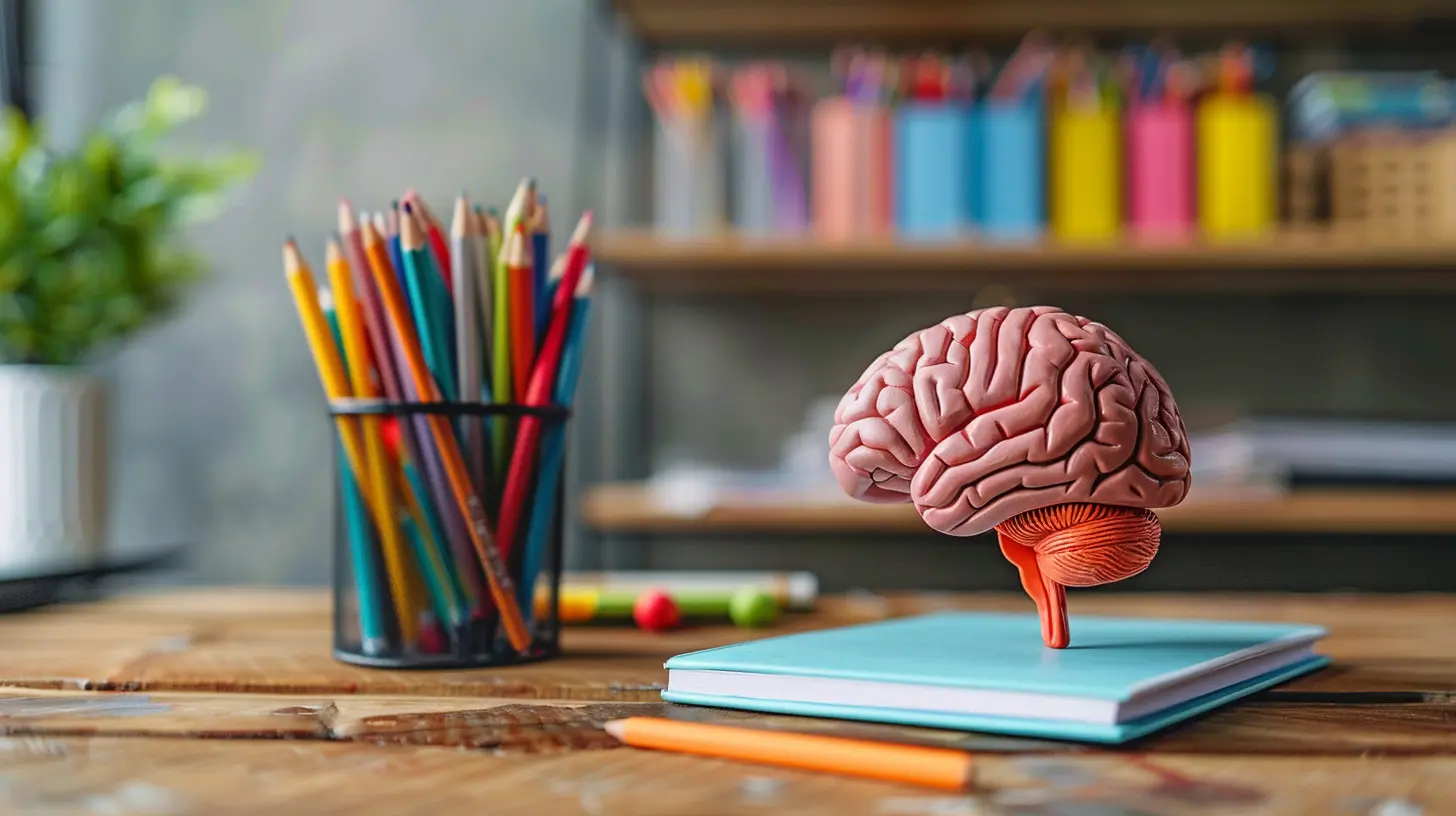How to Create a Brain-Friendly Study Environment at Home
28 June 2025
Studying at home can be a blessing or a curse—it all depends on the environment. A well-structured, brain-friendly study space can enhance focus, boost productivity, and lower stress levels. But setting up the right atmosphere isn't just about a sturdy desk and good lighting. It’s about creating a space that works with the brain, not against it.
So, how do you do it? Let’s break it down step by step.

1. Choose the Right Study Spot
Imagine trying to read a book at a busy coffee shop—the distractions would be endless. The same applies to studying at home. The first step is picking a quiet, dedicated study area.What Makes a Good Study Spot?
- Low Distractions – Avoid high-traffic areas like the living room or kitchen.- Comfortable but Not Too Cozy – A bed is tempting, but it’s better to sit at a desk or table.
- Good Lighting – Natural light is best, but if that’s not possible, use a warm, soft-white lamp.
Pro Tip: Try to keep the study area separate from relaxation zones. This helps train the brain to associate the space with focus and learning.

2. Keep It Organized
A cluttered desk leads to a cluttered mind. When papers, books, and random objects pile up, it’s easy to feel overwhelmed.Simple Organization Hacks
- Use Storage Boxes or Shelves – Keep books and supplies neatly arranged.- Declutter Regularly – At the end of each day, clear unnecessary items.
- Have a System – Color-coded folders, labeled binders, or digital note-taking apps can work wonders.
Fun fact: Studies show that an organized space improves concentration and reduces stress. A little tidying up can go a long way!

3. Control Noise Levels
Silence might work for some, but others might need a little background sound to focus. Finding the right noise level is key.What Are the Best Options?
- Quiet Space – If silence helps, noise-canceling headphones can be a game-changer.- Soft Background Music – Classical tunes or instrumental music can improve concentration.
- White Noise or Nature Sounds – Apps like Noisli or YouTube playlists can provide calming sounds.
Avoid: Loud, distracting music with lyrics—it might make studying harder, not easier.

4. Adjust the Temperature and Lighting
Did you know the temperature of a room affects how well you concentrate? Too hot, and you feel sluggish. Too cold, and you’re shivering instead of studying.- Ideal Temperature: Around 70-72°F (21-22°C) is best for learning.
- Proper Lighting: Natural light boosts mood and alertness, but soft artificial lighting works well for nighttime study sessions.
Quick Fix: If natural light is limited, invest in a daylight simulation lamp. It mimics sunlight and keeps the brain alert.
5. Make It Comfortable (But Not Too Cozy)
An uncomfortable chair can make studying unbearable. A chair that’s too soft can make you drowsy. Finding the right balance is crucial.Seating Tips for Maximum Focus
- Supportive Chair – A good chair supports your back without making you sink into it.- Correct Desk Height – Shoulders relaxed, elbows at a 90-degree angle.
- Foot Placement – Feet should rest flat on the floor or on a footrest.
Bonus Tip: If sitting too long feels exhausting, try a standing desk or adjust your position occasionally. Movement keeps the brain engaged!
6. Minimize Digital Distractions
Phones, social media, and notifications can easily break focus. A five-minute scroll can turn into an hour of lost study time.How to Stay Focused Online
- Use Focus Apps – Apps like Forest or Cold Turkey block distractions.- Set Screen Time Limits – Schedule study breaks instead of mindless scrolling.
- Turn Off Notifications – A single ping can derail concentration.
Golden Rule: If a phone isn't necessary for studying, keep it out of sight. "Out of sight, out of mind" works wonders.
7. Personalize the Space for Motivation
A boring study space can feel uninspiring, but a touch of personality can make a world of difference.Ways to Add Motivation
- Inspirational Quotes – A framed quote or sticky note can be a daily reminder to stay on track.- Vision Board – Pictures of goals, achievements, or dream careers serve as motivation.
- Houseplants – Greenery improves air quality and reduces stress.
Remember: A study space should be functional, but also inviting enough to make studying enjoyable.
8. Encourage Healthy Study Habits
The environment is just part of the equation—study habits play a huge role too.Good Study Habits to Practice
- Use the Pomodoro Technique – Study for 25 minutes, then take a 5-minute break.- Stay Hydrated – Dehydration leads to fatigue and brain fog.
- Get Enough Sleep – All-nighters harm memory and focus.
Did you know? Sleep strengthens memory. A good night’s rest is just as important as study time!
9. Keep Supplies Handy
Nothing disrupts focus like getting up to find a missing pen or notebook. Keep everything within arm’s reach.Essential Supplies Checklist
- Pens, pencils, highlighters- Notebooks or planners
- Headphones (if needed)
- Sticky notes for quick reminders
- Water bottle to prevent unnecessary trips to the kitchen
Smart Tip: A small desk organizer can keep everything tidy and easily accessible.
10. Encourage Breaks and Movement
Staring at a screen or book for hours isn't effective. Breaks help refresh the mind and improve productivity.How to Take Effective Breaks
- Stretch or Take a Short Walk – Helps improve blood circulation.- Practice Deep Breathing – Reduces stress and increases focus.
- Grab a Healthy Snack – Fuel the brain with nuts, fruits, or yogurt.
Rule of Thumb: For every 45-50 minutes of studying, take a 10-minute break. It keeps the brain fresh and prevents burnout.
Final Thoughts
Creating a brain-friendly study environment at home isn’t about expensive furniture or complicated setups. The key is to reduce distractions, stay organized, and find what works best for your child (or yourself!).By making small tweaks like optimizing lighting, temperature, and noise levels, studying can become more productive and less stressful. And don’t forget—healthy habits go hand in hand with a good study space.
So, what’s the first change you’ll make to your study area today?
all images in this post were generated using AI tools
Category:
Education TipsAuthor:

Max Shaffer
Discussion
rate this article
2 comments
Gwen McDougal
Creating a brain-friendly study environment at home is essential for fostering focus and retention. Prioritize organized spaces, minimize distractions, and incorporate elements like natural light and comfortable seating to enhance learning and make studying a more enjoyable experience for children.
October 6, 2025 at 5:03 PM

Max Shaffer
Thank you for highlighting these essential tips! A well-organized and comfortable study space truly makes a significant difference in enhancing focus and retention for children.
Fleur Nelson
Creating a nurturing study space reflects our belief in a child’s potential, fostering curiosity and resilience in their learning journey.
July 8, 2025 at 3:09 AM

Max Shaffer
Thank you! A nurturing study space truly empowers children to thrive and explore their potential.


